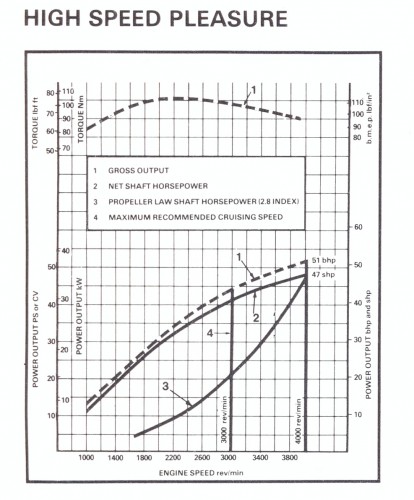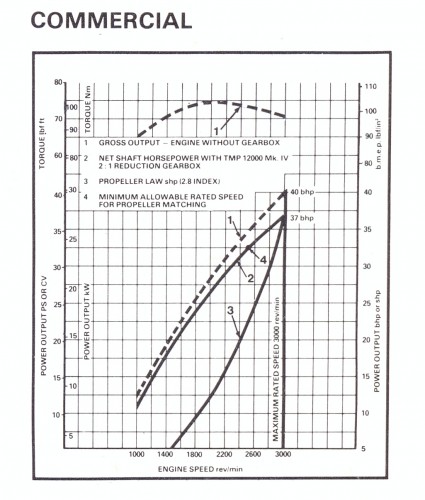Do you want to be informed on new Posts on this Thread? (members only)
| S&S Swan Maintenance - How to find the gear reduction on a Borg Warner |
|---|
|
Join Date: 27 September 2012
Posts: 38 |
||
|---|---|---|
|
How to find the gear reduction on a Borg Warner |
|
Join Date: 20 February 2007
Posts: 119 |
||
|---|---|---|
|
I don't know what horse power was used on the 44 but on the 43s with 37 horse power Perkins the Borg Warner reduction transmission was 1.91:1.
|
|
Join Date: 27 September 2012
Posts: 38 |
||
|---|---|---|
|
We gave a Perkins 4.108 with 55hp, the one with dry cilinders (the latest model). The older one with 37HP has wet cilinders.
|
|
Join Date: 27 September 2012
Posts: 38 |
||
|---|---|---|
|
Perkins engine number explaned: ED70058 U 041846T
|
|
Join Date: 02 January 2008
Posts: 1547 |
||
|---|---|---|
|
Dear Ice and Hiro
|
|
Join Date: 27 September 2012
Posts: 38 |
||
|---|---|---|
|
Many thnx for the input Professor. |
|
Join Date: 15 April 2011
Posts: 393 |
||
|---|---|---|
|
Dear ICE, I face the same problem and have a friend coming to my boat this weekend to check the rpms at the shaft and the engine and panel. I hope the panel and engine match! Good luck!
Chris |
|
Join Date: 15 April 2011
Posts: 393 |
||
|---|---|---|
|
Dear Professor, Would mind explaining the reason for matching a prop on a sailboat that has the Perkins 4.108 to meet 3000 rpms rather than the user manual recommended 4000 rpms? You may have already explained this to me, and possibly others, and I am sure it's somewhat complicated, but I am very interested to learn. Thank you. Chris Mabel's Casse Tete 43/003 |
|
Join Date: 20 February 2007
Posts: 119 |
||
|---|---|---|
|
Hello everyone:
|
|
Join Date: 02 January 2008
Posts: 1547 |
||
|---|---|---|
|
Chris
  |
|
Join Date: 02 January 2008
Posts: 1547 |
||
|---|---|---|
|
Sorry, the third diagram was shrunk, new try
|
|
Join Date: 20 February 2007
Posts: 119 |
||
|---|---|---|
|
Dear Lars:
|
|
Join Date: 15 April 2011
Posts: 393 |
||
|---|---|---|
|
Dear Lars,
|
|
Join Date: 27 September 2012
Posts: 38 |
||
|---|---|---|
|
Hi Lars,
|
|
Join Date: 15 April 2011
Posts: 393 |
||
|---|---|---|
|
Dear Professor,
|
|
Join Date: 02 January 2008
Posts: 1547 |
||
|---|---|---|
|
Dear Ice
|
|
Join Date: 02 January 2008
Posts: 1547 |
||
|---|---|---|
|
Chris
|
|
Join Date: 15 April 2011
Posts: 393 |
||
|---|---|---|
|
Dear Professor,
|
|
Join Date: 20 February 2007
Posts: 119 |
||
|---|---|---|
|
I also agree with Chris.
|
|
Join Date: 02 January 2008
Posts: 1547 |
||
|---|---|---|
|
Chris
|
|
Join Date: 15 April 2011
Posts: 393 |
||
|---|---|---|
|
Dear Lars,
|
- Threads : 1704
- Posts : 10222
- Members: 821
- Online Members: 3

